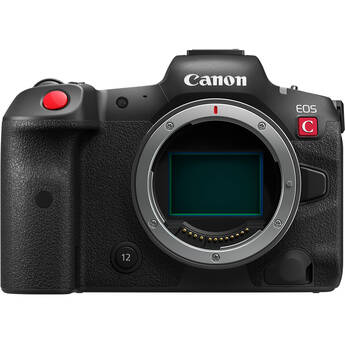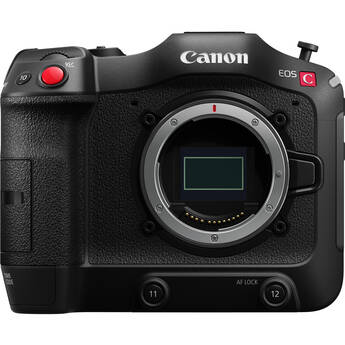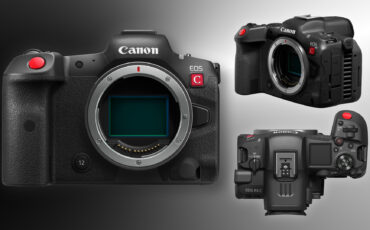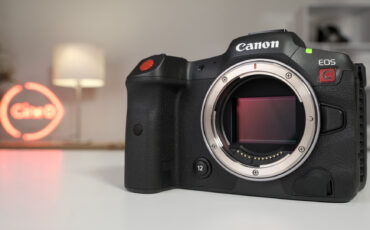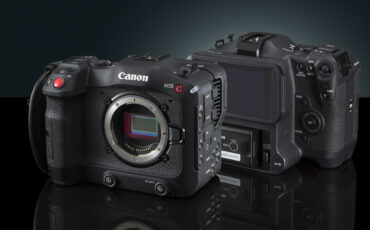Canon EOS R5 C Interview – We Ask, Canon Answers
In the wake of the latest release of Canon’s Cinema EOS lineup, the Canon EOS R5 C mirrorless camera, naturally you, our valued readers had some questions. So we immidiately reached out to get some answers directly from Canon. Watch our full interview here.
In this EOS R5 C interview, Johnnie sits down (virtually, of course) with Aron Randhawa, Canon Product Marketing Specialist, who answers our most burning questions. Read on for a roundup, or watch the full 40-minute interview! For your convenience, we have also added chapter markers to divide the video into different topics covered.
Also, make sure to watch Johnnies first-look review of the new EOS R5 C here.
The full table of contents is as follows:
0:50 – Top 3 things Aron from Canon loves about the new EOS R5 C
2:05 – Why is this camera part of the Cinema line
2:41 – Who is this camera aimed at
3:45 – What are the new RAW variants
5:01 – Is there a difference in quality between RAW LT and ST
6:09 – Why is RAW HQ is limited to Super 35mm sensor mode
6:46 – What is the difference between the RAW found in the EOS R5 C and EOS R5 and R3
8:21 – The RAW found in EOS R5 is equivalent to what RAW type in the EOS R5 C
11:38 – Why is there no 8K/50p in HEVC
14:10 – Explaining the new Anamorphic de-squeeze mode
16:41 – Why is there no IBIS?
25:39 – Why is there no C-Log 2?
28:13 – Why a Micro HDMI?
30:00 – Why is there no better tripod support on this camera?
31:00 – AF explained – is it like in the EOS R5 or C70?
35:00 – EOS C70 firmware update details
38:33 – Is there “best settings” for “best video quality”?
40:13 – Availability
EOS R5 C Interview with Canon
0:50 – Top 3 things Aron from Canon loves about the new EOS R5 C
According to Aron, three features stand out for the newly announced EOS R5 C: 8K60p recording, oversampling (4K, FullHD use oversampling), and the fact that it is a true hybrid camera – photo & video.
2:41 – Who is this camera aimed at
But to make it very clear, he also states that the original EOS R5 is more targeted towards pro photographers while the R5 C is obviously more targeted towards filmmakers, hence the C.
3:45 – What are the new RAW variants
Next up, Aron speaks about Cinema RAW light: all modes are 12-bit, LT, ST, and HQ. LT makes 8K60p possible using a CFexpress Type B card due to its lower bitrate. Having all these choices of RAW flavors as well as different crop modes makes working with a RAW format more accessible in terms of downstream post-production.
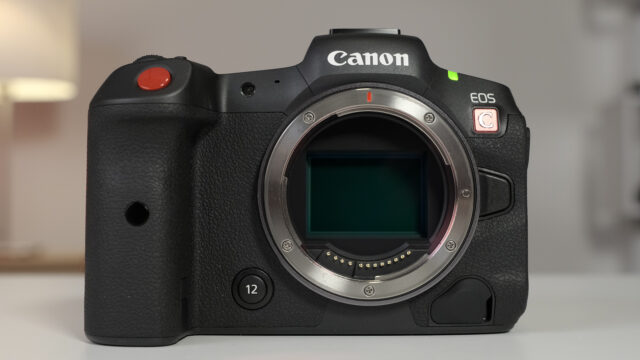
5:01 – Is there a difference in quality between RAW LT and ST
Note: The only difference between LT, ST, and HQ flavors of Cinema RAW Light is data rate, no chroma subsampling, no sharpening whatsoever. The differences in quality are, according to Aron almost indistinguishable, so no huge jumps between LT, ST, and HQ.
6:46 – What is the difference between the RAW found in the EOS R5 C and EOS R5 and R3
There are differences between RAW on EOS R3/R5 and R5 C Cinema RAW Light in that the latter produces slightly smaller file sizes, thus becoming easier to edit and process in NLEs.
11:38 – Why is there no 8K/50p in HEVC
8K60p (using external power to drive the camera) is only possible in Cinema RAW Light since the camera basically needs to only dump a huge amount of data onto the card while more compressed formats such as XF-AVC or HEVC would overwhelm the camera’s capabilities in terms of processing power.
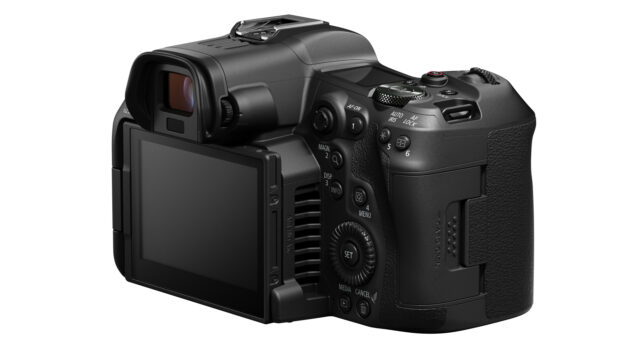
14:10 – Explaining the new Anamorphic de-squeeze mode
In video mode, the EOS R5 C uses a 17:9 aspect ratio @ 8K DCI resolution. When using anamorphic lenses this translates to 4320px (height) x over 5000px in width that can be used when shooting with a 2x anamorphic lens. But the actual de-squeeze is only for viewing purposes (VF, LCD, or HDMI out), the original recording resolution won’t be touched.
IBIS & C-Log 2
16:41 – Why is there no IBIS?
5-axis e-stabilization works hand in hand with Canon lenses: compatible lenses handle 2-axis optical-IS, the R5 C body handles 3 more axis using its electronic stabilization system. RF lenses can actively communicate with the body resulting in better IS. According to Canon, physical IBIS is perfect for still photographers (long exposures while holding the camera still) while e-IS is more targeted towards walking or even running with the camera, for handheld panning and other video-related movements.
These motions can be tricky for a physical IBIS system (it only can compensate as much as the sensor can move – resulting in weird image shifts when walking with the camera for example), therefore, and since the R5 C is marketed towards filmmakers, it has e-IS rather than IBIS.
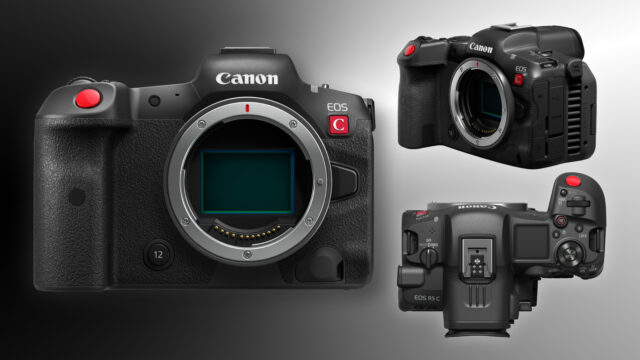
The downside? Well, you’ll need a Canon RF lens for getting the most out of the e-IS. No anamorphic lenses, no third-party lenses. But, of course, you can use these third-party lenses and tell the R5 C body the focal length you’re using via the menu system so the e-IS knows what it’s dealing with.
Aron’s second argument against IBIS is power consumption since counteracting movements by shifting the sensor all the time naturally drains the battery. By the way: When shooting 8K RAW, e-IS is completely disabled as it is a form of processing that is avoided in RAW by definition (along with NR, sharpening, etc).
Another disadvantage, if you want to call it that, of using e-IS instead of mechanical IBIS is that the image is cropped slightly to give the camera some room to apply stabilization.
25:39 – Why is there no C-Log 2?
C-Log 2 offers up to 16 stops of dynamic range (depending on the camera of course). In order to achieve that it boosts the shadows quite a bit, resulting in an increased noise floor.
C-Log 3, on the other hand, offers a dynamic range of up to 14 f-stops, with less shadow amplification, so less noise as well, resulting in a much simpler post-production pipeline. Both profiles share the same highlight retention curve. According to Aron, C-Log 3 is the most popular Log format.
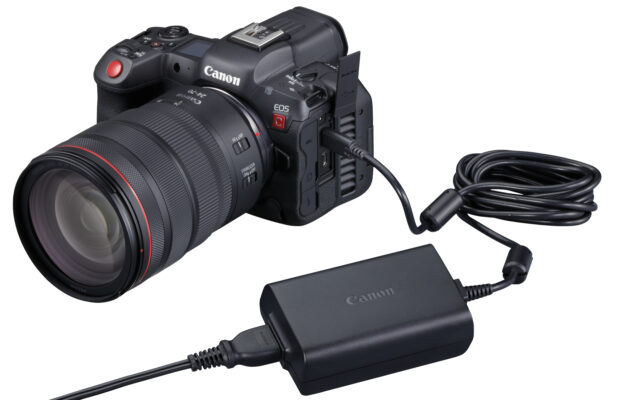
Of course, implementing a different gamma curve does not change the dynamic range of the camera, and in this case, Canon simply chose not to implement C-Log 2 in the R5 C as the high-resolution sensor and associated small pixels do not allow for anything close to a 16 stop dynamic range anyway. You could, of course, shoot RAW and transform that into C-Log 2 in post prior to your regular C-Log 2 pipeline.
Micro-HDMI & AF
28:13 – Why a Micro HDMI?
Since the R5 C basically is an R5 on steroids it shares a lot of physical specs with it. Many cages will still fit the R5 C even though they were designed for the R5. The terminals on the side of the R5 C are the same that can be found on the R5. However, a cable protector is included in the box, which protects the micro HDMI and the USB-C.
30:00 – Why is there no better tripod support on this camera?
Only one 1/4″20 thread on the bottom of the EOS R5 C can be found. Of course, this isn’t ideal if you’re mounting the camera on a tripod, as it will likely twist at some point. The reason is, again, the same body design as the R5. According to Aron, you can think of the R5 C design as an add-on to the original R5. Take what is there and add features and physical aspects to it (like the new TC terminal or the cooling system outlets).
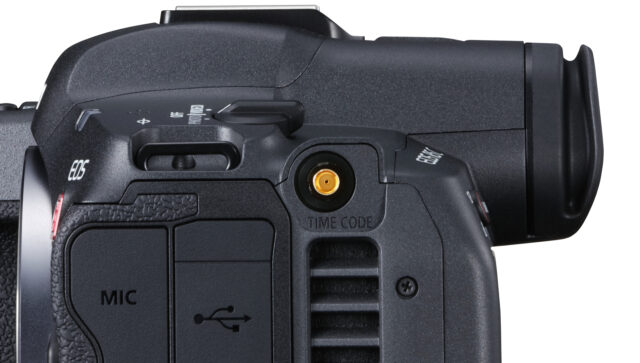
31:00 – AF explained – is it like in the EOS R5 or C70?
Aron states that AF for photography is very different from AF for filmmaking. The R5 C sports face-only focussing, head and eye tracking (iTR AF X). Plus you can fine-tune a lot of speed and response settings for slower (but still automatic) focus pulls for example, which are not available for photo AF. On the other hand, things like animal tracking or vehicle tracking are exclusive for photo AF in the R5 C. So, as it seems, there is not just one, but many aspects of AF, each with very specific use cases.
EOS C70 & Availability
35:00 – EOS C70 firmware update details
Cinema RAW Light LT, ST, HQ will be added to the C70 with an upcoming firmware update. So all modes are there but only in limited frame rates because of SD card limitations (check our other news article for details).
40:13 – Availability
The target is the end of March. According to Canon, another reason for sharing some components of this camera with the original R5 is the ongoing shortage of electronic components all the manufacturers depend on when actually manufacturing their products.
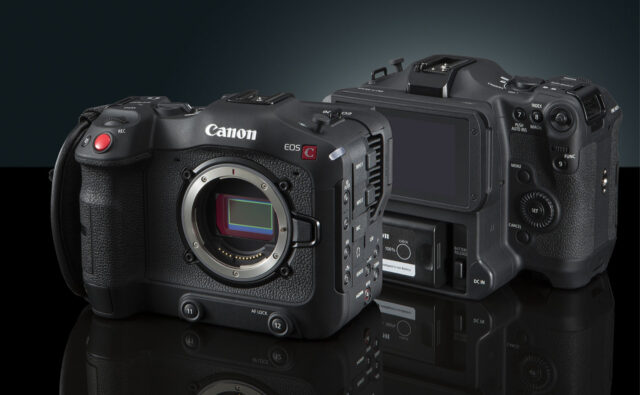
Even though some of this camera’s features still leave something to be desired, we should wait and see and then gain more knowledge through real-world tests. In the end, given its size and yes, price, the EOS R5 C looks like an outstanding piece of equipment. Oh, and let’s hope 8K marks the end of the pixel madness, as I personally don’t want to go to 16K land anytime soon.
What do you think? Would you consider getting an EOS R5 C for your projects? Share your thoughts in the comments below!
